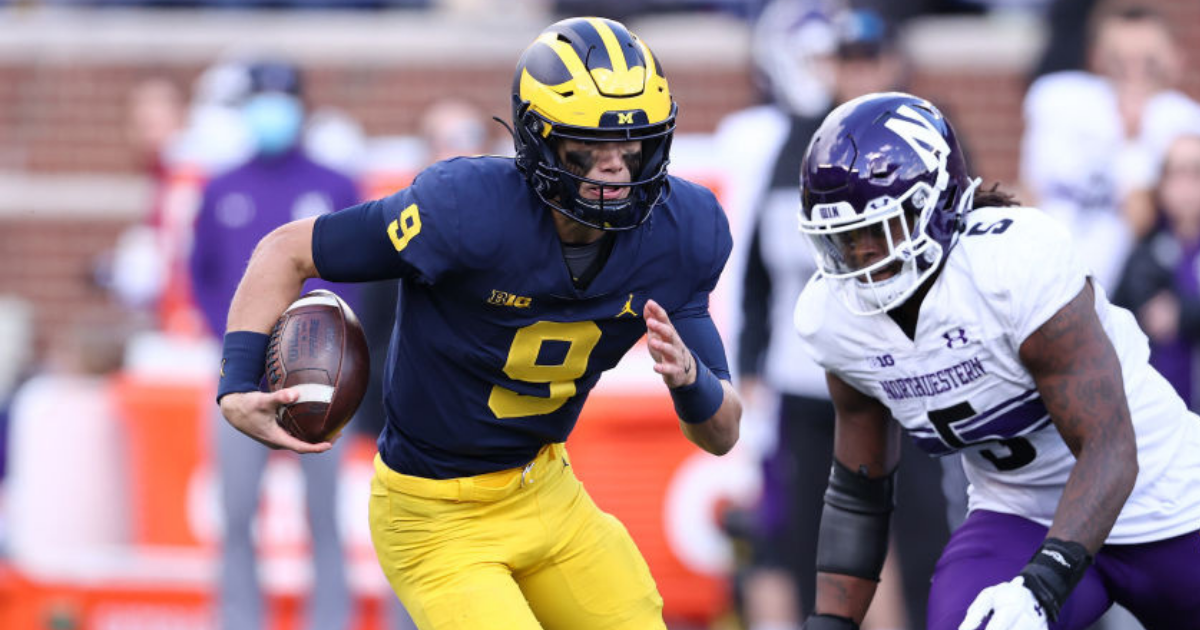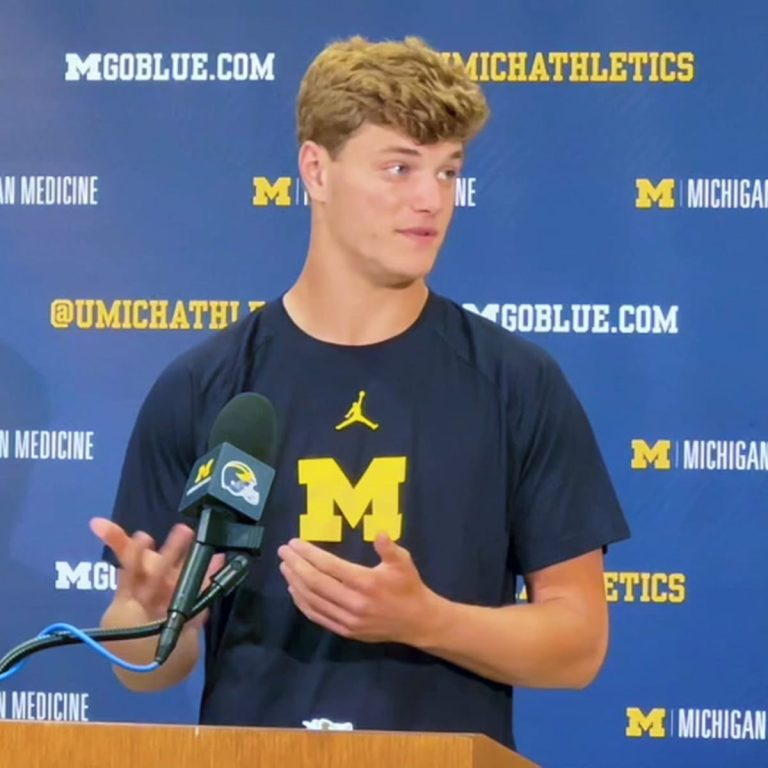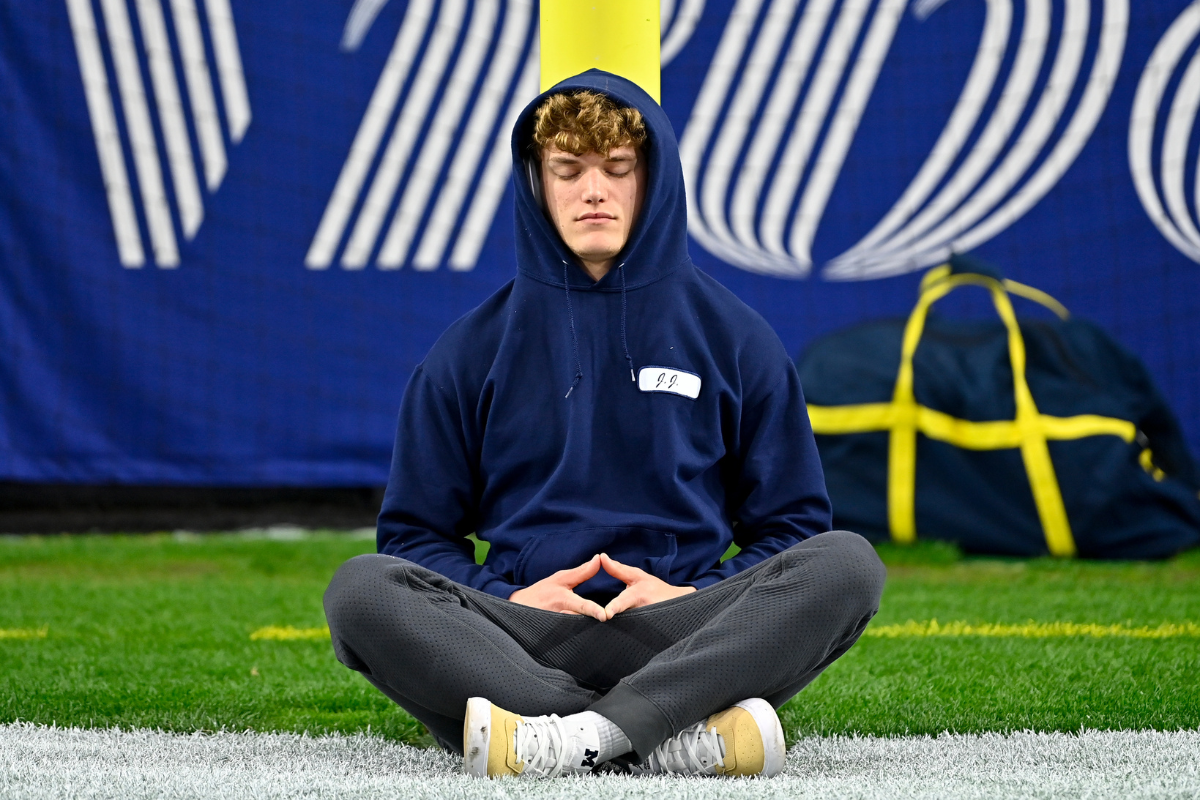JJ McCarthy’s Surgical History

JJ McCarthy, the talented quarterback for the University of Michigan Wolverines, has a history of undergoing surgical procedures. While these procedures have presented challenges, they have also played a role in shaping his athletic journey. This section explores the known surgeries JJ McCarthy has undergone, delving into the details of each procedure, including the dates, types, and reasons for the surgeries. It also examines any associated complications or recovery periods and sheds light on the impact of these surgeries on his athletic performance.
Surgical Procedures Undergone by JJ McCarthy
Information about JJ McCarthy’s surgical history is limited, and details regarding specific dates and types of surgeries are not widely available. However, based on publicly available information, it is known that JJ McCarthy has undergone at least one surgery.
- Shoulder Surgery: In 2021, JJ McCarthy underwent surgery on his throwing shoulder. The exact nature of the surgery and the specific reason for it are not publicly known. However, it is believed that the surgery was necessary to address an injury sustained during his time at the University of Michigan. The surgery likely involved repairing a torn labrum or rotator cuff, common injuries for quarterbacks.
Impact of Surgeries on JJ McCarthy’s Athletic Performance
The impact of JJ McCarthy’s surgeries on his athletic performance is a topic of ongoing discussion. While the specific details of his surgeries and recovery periods are not readily available, it is reasonable to assume that any surgery on a throwing shoulder could potentially affect a quarterback’s performance. The recovery process from shoulder surgery can be lengthy and require significant rehabilitation to regain full strength and range of motion.
It is important to note that JJ McCarthy has demonstrated remarkable resilience and a strong work ethic. He has shown a determination to overcome any challenges posed by his surgeries and to continue performing at a high level. His ability to return to the field after surgery is a testament to his commitment and dedication to his craft.
Common Surgeries in College Football Players

The high-impact nature of college football often leads to injuries requiring surgical intervention. These surgeries are not only for acute injuries but also for preventative measures and to address long-term health concerns. Understanding the most common surgeries and their associated recovery times, potential complications, and long-term effects is crucial for both players and medical professionals.
Types of Surgeries
College football players undergo a wide range of surgeries, each with its own unique set of risks and benefits. Here are some of the most common types:
- ACL Reconstruction: This surgery is performed to repair a torn anterior cruciate ligament (ACL), a common injury in football. It involves replacing the torn ligament with a graft taken from another part of the body, such as the patellar tendon or hamstring.
- Meniscus Repair/Removal: The meniscus is a cartilage disc that cushions the knee joint. Tears in the meniscus can occur due to twisting or impact injuries. Depending on the severity of the tear, the surgeon may repair the meniscus or remove a portion of it.
- Shoulder Rotator Cuff Repair: The rotator cuff is a group of muscles and tendons that stabilize the shoulder joint. Tears in the rotator cuff are common in football due to repetitive overhead movements and impact injuries. Surgery involves repairing the torn tendon or tendons.
- Achilles Tendon Repair: The Achilles tendon connects the calf muscles to the heel bone. Tears in the Achilles tendon can occur due to sudden forceful movements or overuse. Surgery involves repairing the torn tendon.
- Hernia Repair: Hernias occur when an organ or tissue protrudes through a weak spot in the abdominal wall. Inguinal hernias are common in football due to straining during tackles and other forceful movements. Surgery involves repairing the weakened area.
Recovery Times, Complications, and Long-Term Effects, Jj mccarthy surgery
The recovery process for each type of surgery varies depending on the severity of the injury, the individual’s health, and other factors. However, it’s important to understand the general recovery times, potential complications, and long-term effects associated with these surgeries.
| Surgery | Recovery Time | Potential Complications | Long-Term Effects |
|---|---|---|---|
| ACL Reconstruction | 6-12 months | Infection, blood clots, stiffness, nerve damage | Potential for future ACL injuries, osteoarthritis |
| Meniscus Repair/Removal | 4-6 weeks (repair), 2-4 weeks (removal) | Infection, stiffness, pain, osteoarthritis | Potential for future meniscus tears, osteoarthritis |
| Shoulder Rotator Cuff Repair | 4-6 months | Infection, stiffness, nerve damage, weakness | Potential for future rotator cuff tears, osteoarthritis |
| Achilles Tendon Repair | 6-12 months | Infection, stiffness, nerve damage, weakness | Potential for future Achilles tendon tears, osteoarthritis |
| Hernia Repair | 2-4 weeks | Infection, pain, numbness, bowel obstruction | Potential for recurrence, chronic pain |
Impact of Surgeries on Athletic Performance: Jj Mccarthy Surgery

Surgeries, while essential for treating injuries, can significantly impact a football player’s performance. The recovery process, pain management, and psychological effects all play a role in determining how quickly and effectively a player can return to the field. This section will explore the challenges and strategies associated with surgical recovery in the context of athletic performance.
Recovery Time and Rehabilitation
Recovery time after surgery varies depending on the type of procedure, the severity of the injury, and the individual’s overall health. Athletes often face a longer recovery period compared to non-athletes due to the demands of their sport.
Rehabilitation is crucial for a successful return to play. It involves a structured program of exercises and therapies designed to restore strength, flexibility, range of motion, and coordination. This process typically includes:
- Physical Therapy: Physical therapists work with athletes to improve their mobility, strength, and balance through targeted exercises and modalities like massage, ultrasound, and electrical stimulation.
- Strength Training: Strength training is essential for rebuilding muscle mass and regaining lost strength, which is critical for athletic performance. This typically involves working with a certified strength and conditioning coach to develop a personalized program.
- Cardiovascular Conditioning: Maintaining cardiovascular fitness is important for overall athletic performance and endurance. Athletes may engage in low-impact activities like swimming, cycling, or walking to maintain their fitness levels during the recovery phase.
- Proprioceptive Training: This type of training focuses on improving balance, coordination, and awareness of body position. It helps athletes regain stability and control after surgery, especially in activities involving quick movements and changes in direction.
Pain Management
Pain management is a significant aspect of surgical recovery, particularly for athletes who need to push their bodies during rehabilitation. A multidisciplinary approach to pain management is often employed, involving:
- Medications: Pain relievers, including over-the-counter options like ibuprofen or prescription medications like opioids, may be used to manage pain during the initial stages of recovery.
- Physical Therapy Modalities: Techniques like ice therapy, heat therapy, and electrical stimulation can help reduce pain and inflammation.
- Alternative Therapies: Acupuncture, massage, and yoga can be used to complement traditional pain management methods and promote relaxation and healing.
Psychological Effects
Surgical recovery can be mentally challenging for athletes, especially when they are forced to sideline their passion. Athletes may experience:
- Anxiety and Depression: The fear of losing their athletic career or the inability to participate in their sport can lead to feelings of anxiety and depression.
- Frustration and Anger: The limitations imposed by the recovery process can lead to frustration and anger, especially when athletes are eager to return to their sport.
- Loss of Confidence: Athletes may question their ability to return to their previous level of performance, leading to a loss of confidence.
Athletes can manage these psychological effects by:
- Seeking Professional Support: Speaking with a sports psychologist or counselor can provide coping strategies and support during the recovery process.
- Setting Realistic Goals: Focusing on small, achievable goals can help athletes maintain motivation and progress towards their return to play.
- Maintaining a Positive Mindset: Surrounding themselves with positive influences and focusing on their progress can help athletes maintain a positive outlook.
Jj mccarthy surgery – JJ McCarthy’s surgery was a tough one, but the young man is a fighter. It’s a reminder that even the most talented athletes can face adversity. Just look at what happened to Jahmyr Gibbs, who is recovering from jahmyr gibbs injury.
We all wish him the best in his recovery. We know JJ McCarthy will come back stronger, just like Gibbs will, because their spirit is unyielding.
JJ McCarthy’s surgery, a crucial step in his recovery journey, is a reminder that the road back from injury can be long and demanding. The meniscus tear, a common injury among athletes, requires careful attention and rehabilitation. For a comprehensive guide on navigating this challenging process, I recommend exploring this resource on meniscus tear recovery.
With dedication and the right guidance, JJ McCarthy can return to the field stronger than ever, showcasing the resilience of a true champion.
